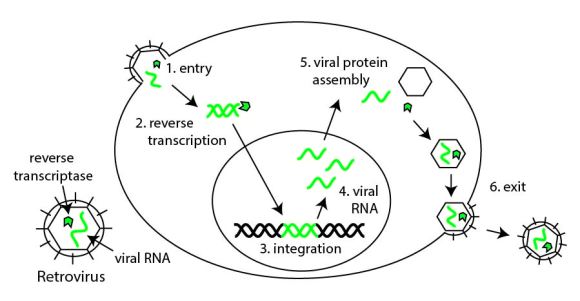Did you know salamanders can regenerate their limbs? They can regrow their tails, hearts, and eyes too. And their potential to repair tissue is almost limitless [1]. As they grow older, their ability to regenerate slows down, but it never goes away completely. Why can’t people do that? No more organ donor wait-lists or prosthetic limbs. Just regrow what you’ve lost. Scientists are studying salamanders to find the key to regrowing body parts. Imagine how the world would change if this could work in people.
 We’re still not sure how salamanders do this, but stem cells may be the key. When salamanders lose a limb, cells at the site of amputation reprogram themselves into adult stem cells [1]. These cells have the potential to turn into many different cell types, a property called multipotency. Cells at the amputation site rapidly divide and form muscle, bone, and skin to replace the lost limb. Humans also have adult stem cell populations that replenish red and white blood cells and participate in limited healing, but regrowing a human limb remains just out of reach (Amputation puns are disarming).
We’re still not sure how salamanders do this, but stem cells may be the key. When salamanders lose a limb, cells at the site of amputation reprogram themselves into adult stem cells [1]. These cells have the potential to turn into many different cell types, a property called multipotency. Cells at the amputation site rapidly divide and form muscle, bone, and skin to replace the lost limb. Humans also have adult stem cell populations that replenish red and white blood cells and participate in limited healing, but regrowing a human limb remains just out of reach (Amputation puns are disarming).
Adult stem cells might not be able to do the job, but human embryonic stem cells (ESCs) could. ESCs can turn into any type of cell, a property known as pluripotency. As an embryo matures and develops into a fetus, embryonic stem cells select one of three lineages that will later form tissues found in the outer (ectoderm), middle (mesoderm), and inner (endoderm) parts of the body [2]. As embryonic stem cells mature, they lose the ability to turn into other types of cells, or lose pluripotency.
Recently, scientists have discovered genes that can reactivate pluripotency in any cell. And one of those genes is today’s gene of interest: octomer-binding transcription factor 4 or Oct4.
Oct4 was one of four pluripotency genes identified by the Yamanaka Lab in Tokyo, Japan (the other three were Sox2, c-Myc, and Klf4) [3]. When mature cells are forced to express these four genes, they regained their pluripotency and became induced pluripotent stem cells or iPSCs (Actually which genes are required to induce pluripotency is still being debated, and there’s one article that claims it can be achieved using only Oct4) [4]. The first human iPSCs were made from fibroblasts (wound healing cells found in skin and connective tissue). After Oct4 and its buddies were introduced into these cells they reverted to stem cells capable of turning into any cell type.
It’s not easy to get cells to express a new gene. To do this, scientists used retroviruses. A quick background on retroviruses (because I think they’re cool): normally in a cell, a protein is made by copying the DNA for a gene into RNA (another nucleic acid very similar to DNA). The RNA copy is read by the cell and used as instructions to build a protein [5]. Retroviruses hijack this process. They inject their viral RNA into the cell and, using an enzyme called reverse transcriptase, insert their viral genes into the host cell’s genome. Once it’s in the genome, it’s stuck forever. The host cell reads the gene and builds more viruses that leave the host cell to infect cells in other parts of the body [6].

Retroviruses hijack the host cell to create copies of itself. 1) The virus enters the cell. 2) Reverse transcriptase converts viral RNA into viral DNA. 3) The viral DNA integrates into the host genome. 4) The host cell creates copies of the viral RNA. 5) The host cell assembles new viruses. 6) The newly assembled viruses exit the cell to infect other cells.
To induce pluripotency, we’ve stolen the retrovirus’s tricks. Using tamed versions of the virus, scientists can insert genes like Oct4 into an adult cell. Instead of producing more viruses, the cell produces Oct4 which reverts it to a pluripotent state [6].
In fact, scientists are finding these induced genes work so well that cells will stubbornly remain pluripotent despite attempts to turn them into a particular cell type [7]. So the only thing stopping us from growing new limbs is convincing these iPSCs to just grow up.

References
[1] “Salamanders may hold the key to regrowing human limbs, study finds”. Fox News Health. 19 June 2014.
[2] “What are embryonic stem cells?”. National Institutes of Health.
[3] Takahashi, K.; Yamanaka, S. (2006). “Induction of Pluripotent Stem Cells from Mouse Embryonic and Adult Fibroblast Cultures by Defined Factors”. Cell 126 (4): 663–76. PMID 16904174.
[4] Kim, JB.; Sebastiano, V.; Wu, G.; Araúzo-Bravo, MJ.; Sasse, P.; Gentile, L.; Ko, K.; Ruau, D.; Ehrich, M.; van den Boom, D.; Meyer, J.; Hübner, K.; Bernemann, C.; Ortmeier, C.; Zenke, M.; Fleischmann, BK.; Zaehres, H.; Schöler, HR. (2009) “Oct4-induced pluripotency in adult neural stem cells”. Cell 136 (3): 411-9. PMID 19203577.
[5] “From genes to proteins”. Genetic Home Reference. 30 November 2015.
[6] Kurth, Reinhard; Bannert, Norbert, eds. (2010). Retroviruses: Molecular Biology, Genomics and Pathogenesis. Horizon Scientific. ISBN 978-1-904455-55-4.
[7] “Researchers pinpoint roadblocks to lab-grown stem cells’ maturation”. Phys.org. 12 November 2015.
[…] discussed retroviruses before. A retroviruses inserts its viral RNA into the host cell’s genome using an enzyme […]
LikeLike